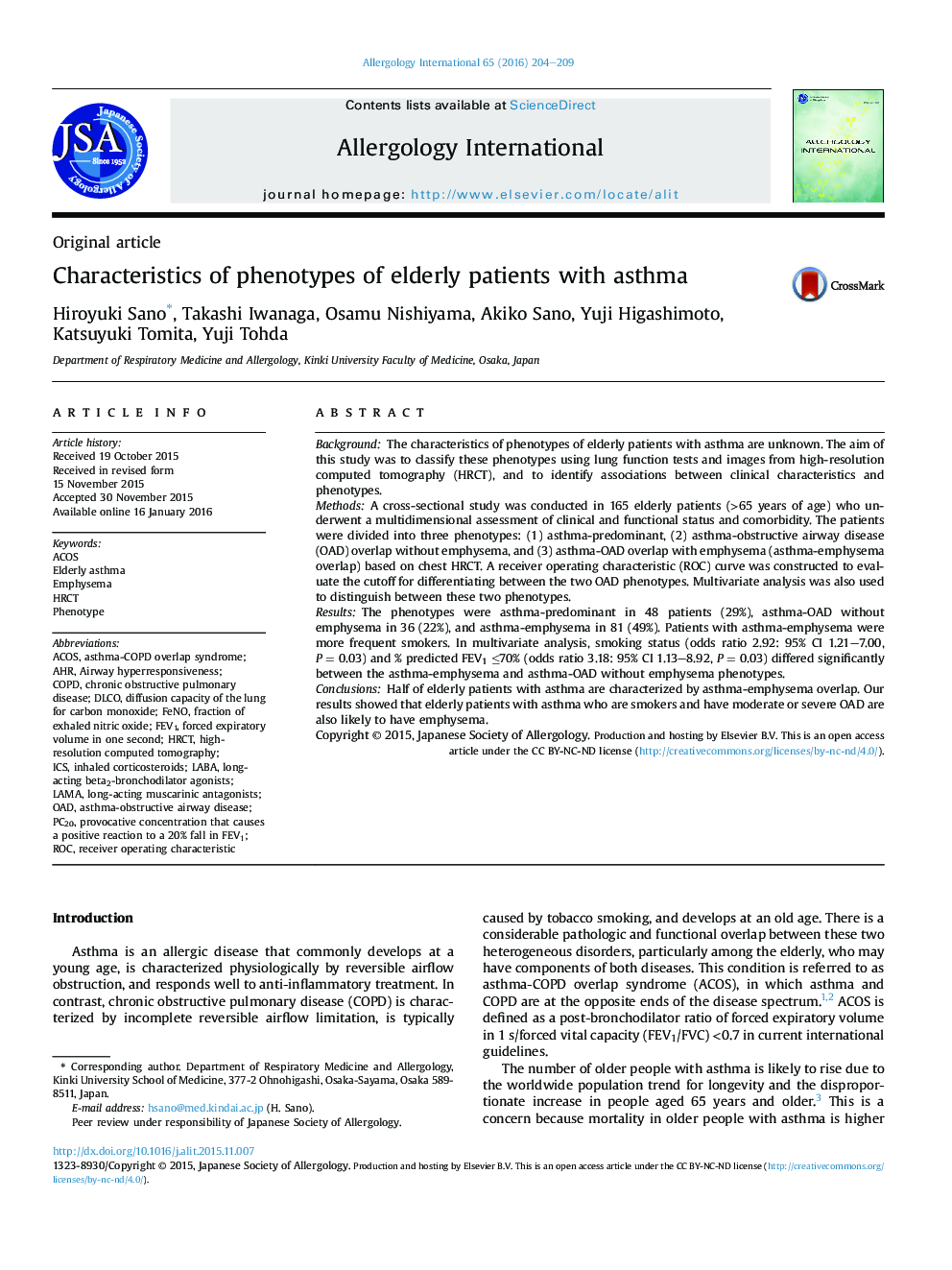| Article ID | Journal | Published Year | Pages | File Type |
|---|---|---|---|---|
| 3340484 | Allergology International | 2016 | 6 Pages |
BackgroundThe characteristics of phenotypes of elderly patients with asthma are unknown. The aim of this study was to classify these phenotypes using lung function tests and images from high-resolution computed tomography (HRCT), and to identify associations between clinical characteristics and phenotypes.MethodsA cross-sectional study was conducted in 165 elderly patients (>65 years of age) who underwent a multidimensional assessment of clinical and functional status and comorbidity. The patients were divided into three phenotypes: (1) asthma-predominant, (2) asthma-obstructive airway disease (OAD) overlap without emphysema, and (3) asthma-OAD overlap with emphysema (asthma-emphysema overlap) based on chest HRCT. A receiver operating characteristic (ROC) curve was constructed to evaluate the cutoff for differentiating between the two OAD phenotypes. Multivariate analysis was also used to distinguish between these two phenotypes.ResultsThe phenotypes were asthma-predominant in 48 patients (29%), asthma-OAD without emphysema in 36 (22%), and asthma-emphysema in 81 (49%). Patients with asthma-emphysema were more frequent smokers. In multivariate analysis, smoking status (odds ratio 2.92: 95% CI 1.21–7.00, P = 0.03) and % predicted FEV1 ≤70% (odds ratio 3.18: 95% CI 1.13–8.92, P = 0.03) differed significantly between the asthma-emphysema and asthma-OAD without emphysema phenotypes.ConclusionsHalf of elderly patients with asthma are characterized by asthma-emphysema overlap. Our results showed that elderly patients with asthma who are smokers and have moderate or severe OAD are also likely to have emphysema.
